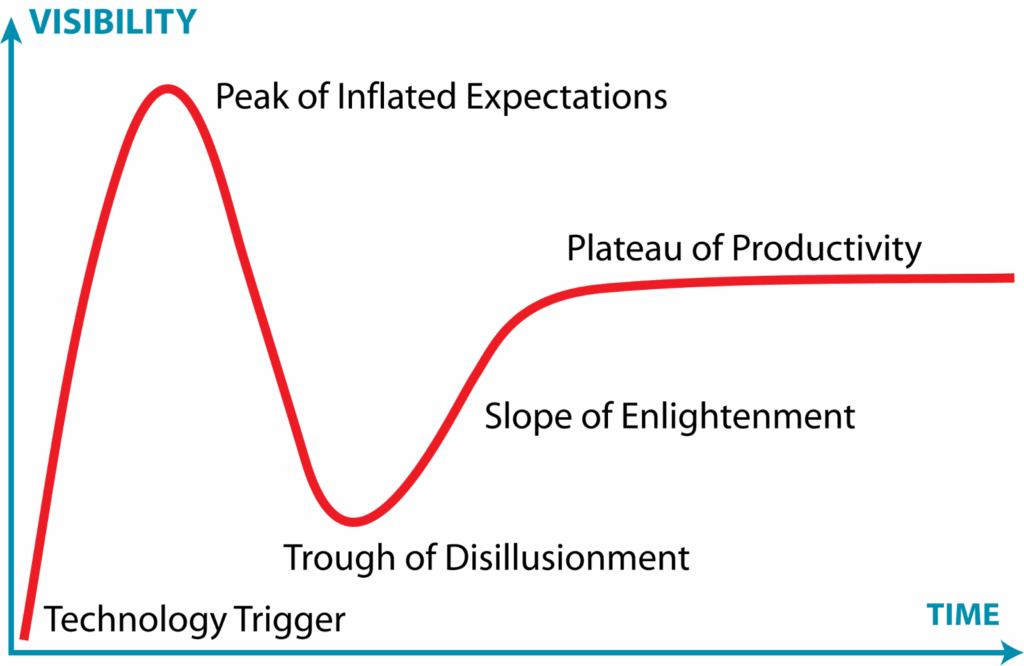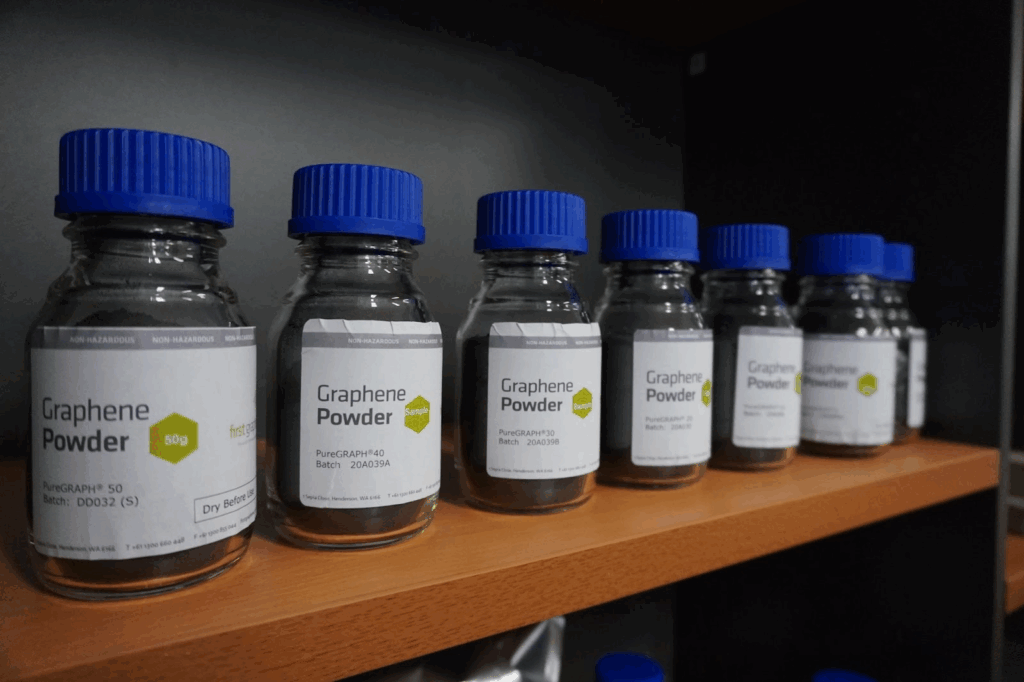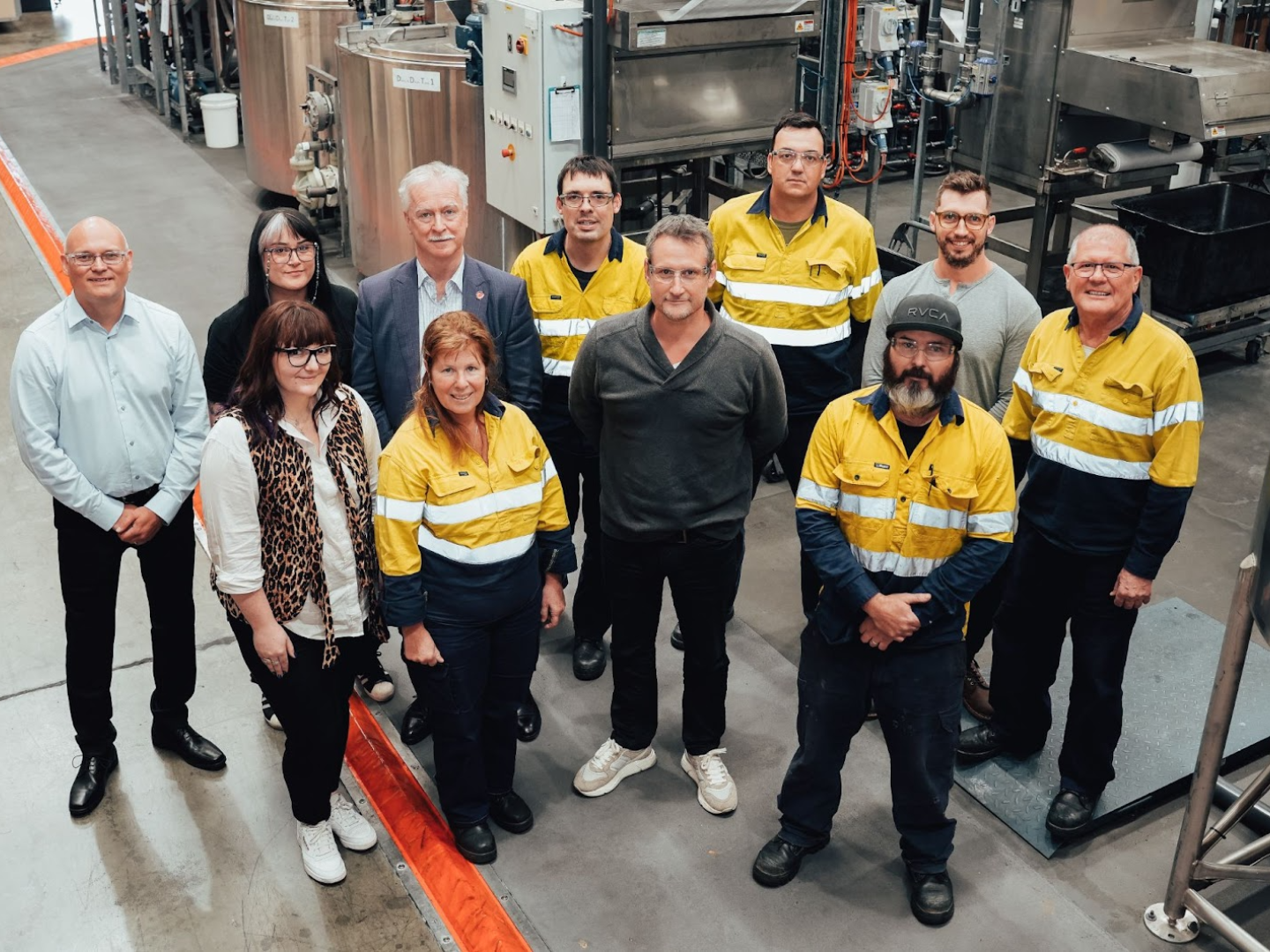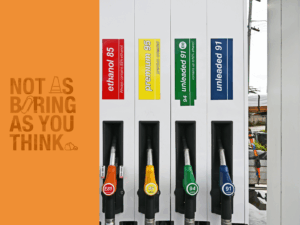Western Australia extracts an abundance of wealth from its ground. Iron ore, gold and nickel have made WA rich, but we need to invest that money in our future.
One materials technology company is paving the way.
First Graphene manufactures graphene in Henderson. It also holds research offices in Manchester, where graphene was discovered 21 years ago.
Graphene’s technology trigger
Graphene is a carbon crystal structure. Carbon atoms bond into a honeycomb structure one atom thick.
Stacking layers of graphene together, like honeycomb layers in a beehive, creates graphite.
Graphite occurs naturally, and humans have used it since the Neolithic era. It’s a key component of pencils.
But graphene was only discovered in 2004.
Its discovery generated media hype, with the ‘cousin of coal’ graphene heralded as a wonder material.
Now, it appears to be starting to live up to this promise.

Credit: AK Geim and KS Novoselov/Nature
Australia’s economic trough
While Australia is among the world’s richest nations, we have one of the simplest economies.
Harvard University’s index of economic complexity ranked Australia 105th of 145 countries. Our rank has been slowly dropping over the past 20 years.
Australia’s economy relies on a few key industries, including mining, agriculture and real estate.
This yields WA’s mining boom and bust cycle and sudden unemployment changes.
Investors’ expectations
Australia’s economy is heavily linked to mining, though a recent Australian Security Exchange (ASX) report found investment in new technologies.
CEO and Managing Director of First Graphene Mike Bell supports this finding. First Graphene manufactures graphene products at its Henderson site to sell internationally.
Mike says some investors incorrectly assume First Graphene is a mining company.
“Investors [are familiar with] successes through mining, [where] a lot of the value and money is made in the early stage,” says Mike.
“Turning it into a mine and running down an asset is something that they’re more familiar with.”
Mike cites the short path from first discovery to commercial use as proof graphene is a growth investment.
“We’re talking about creating intellectual property and this material that grows a business over time,” says Mike.
The slope of enlightenment
The Gartner hype cycle describes technology booms over time.

Credit: Jeremykemp/Wikicommons
If the 2010s represented graphene’s trough of disillusionment, it could be heading towards its slope of enlightenment.
First Graphene works with industries to commercialise graphene. It has developed an additive that strengthens cement, improves durability and fire retardance and lowers manufacturing emissions.
It adds graphene to fibreglass in swimming pools to improve their strength and reduce weight while working with Aquatic Leisure Technologies.
And graphene in perovskite solar cells reduces toxic battery waste.
Cleaner power = greener materials
Mike says staff and energy are the main challenges of running a materials technology company in WA.
“[Finding] somebody that’s a material scientist of good calibre and experience is very rare here. We also have a lot of dirty power here in Western Australia and it’s expensive,” says Mike.
“Trying to pitch our materials as being greener and extending the life of materials, reducing CO2, we have to take that dirty power into account.”
Dirty power is electricity that is highly polluting and inefficient. Most of WA’s electricity still comes from coal and natural gas.
“Through a targeted production line … at our Henderson facility, we’re now able to create graphene [with] benefits [that] outweigh any CO2 contribution our power needs would create,” says Mike.

Credit: First Graphene
Beyond the economic plateau
Developing and diversifying Australia’s economy means investing into industries other than our top performers.
This would make Australia more resilient to global economic change and provide increased opportunities for workers.
First Graphene has demonstrated that WA can become a technology hub if the state government provides opportunities – such as developing technology expertise, renewable energy and research investment to aid manufacturing.
If WA remains an extraction economy, one day there will be nothing left to extract.









